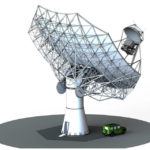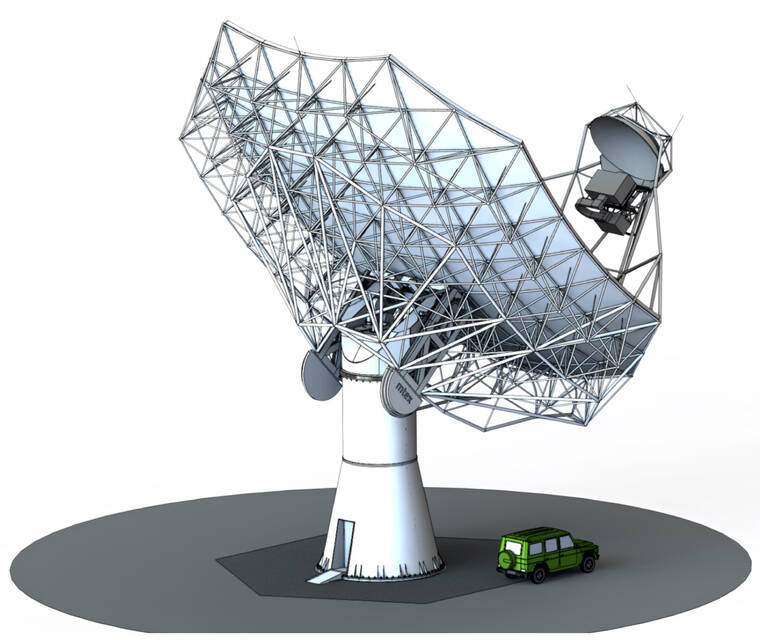Three additional radio telescopes could be built on the Big Island as part of a nationwide telescope array.
The Astronomy and Astrophysics Decadal Survey, also called Astro2020, was released earlier this month and made several recommendations to the National Science Foundation about which astronomy projects should be priorities for future investment.
Astro2020’s strongest recommendation for ground-based facilities was for the NSF to invest $800 million each in both the Thirty Meter Telescope and the Giant Magellan Telescope as part of a U.S. Extremely Large Telescope Program. However, the survey also recommended that the NSF invest approximately $2.5 billion in another project that could also have impacts on the Big Island.
The Next Generation Very Large Array — shortened to ngVLA — is a proposed array of 244 18-meter-wide radio telescope antennas spread across the U.S. that would operate in tandem to generate fine-resolution images of celestial objects.
The project would replace the Karl Jansky Very Large Array, which comprises 27 antennas in New Mexico, and the Very Long Baseline Array, which is made up of 10 antennas throughout the country from the U.S. Virgin Islands to Maunakea.
Both arrays are operated by the National Radio Astronomy Observatory, which also would manage the ngVLA.
NRAO Director Tony Beasley said the increased scale of the ngVLA compared to the other two arrays would lead to an increase in sensitivity by an order of magnitude: While the VLA and VLBA are able to observe radio emissions at centimeter-long wavelengths, the ngVLA would be able to do so at wavelengths only a millimeter long.
But because of the vastly increased number of antennas required for the ngVLA project, Beasley said the project will require several new sites for ngVLA installations, and additional antennas to be added to VLBA sites.
In Hawaii’s case, Beasley said the project would seek to erect six ngVLA antennas throughout the state. Three of those would be located on the Big Island, with the remaining three elsewhere in the state.
Design documents from 2019 specify that the three antennas on the Big Island would be located “NOT on Mauna Kea. New site.”
Beasley said he believes it unlikely that all three Big Island antennas could be built on Maunakea, considering the considerable pushback the TMT project has received from Native Hawaiian activists.
Although he said the Maunakea summit is an ideal site for astronomy facilities, Beasley said the antennas will operate fine at lower altitudes.
The remaining three antennas could be built at Kokee Park Geophysical Observatory on Kauai, according to the 2019 document.
“It’s not an existential problem for the project if they’re not built on Hawaii,” Beasley said, but added that the imaging power of the array is a direct function of its wide distribution. If Hawaii is cut from the array, the total east-west distance of the array would be reduced by 2,500 miles, and its imaging ability commensurately decreased.
Beasley also said that going forward with the ngVLA project would lead to the decommissioning and eventual removal of VLBA facilities, including the existing VLBA telescope on Maunakea.
However, the ngVLA is a long way off. Astro2020 recommends that, should NSF act quickly, earliest construction on the project could begin by the end of the decade, with full completion within another decade.
But Beasley said he hopes to expedite the process as much as possible, with a timeline on the NRAO website estimating a construction start date within five years, and a completed project by 2035.
Email Michael Brestovansky at mbrestovansky@hawaiitribune-herald.com.









